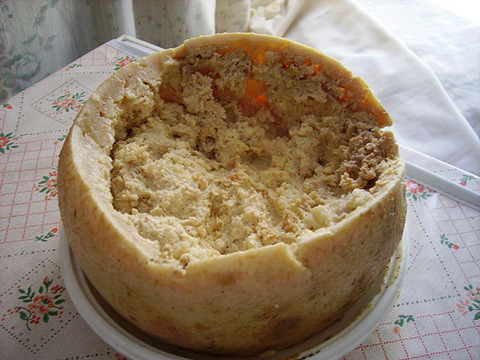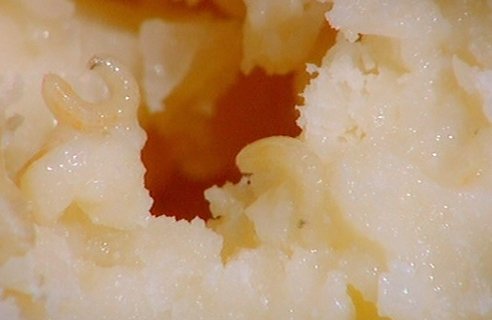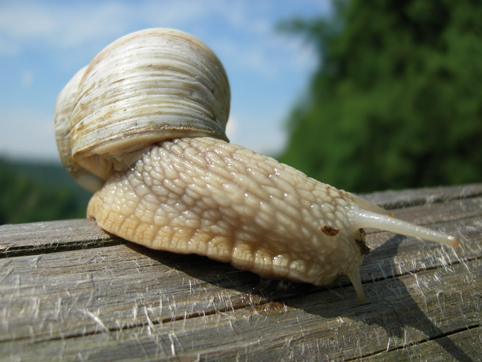MOLTO PIÙ CHE PASTA E PIZZA……
Quando si parla di cibo italiano, le prime cose che vengono in mente sono, ovviamente, la pasta, la pizza e le lasagne. I viaggiatori che amano provare cose nuove sanno bene che esiste una gran quantità di saporite ricette regionali che non hanno niente a che fare con le specialità più note in tutto il mondo. Ma non molti sanno di alcune tradizioni gastronomiche italiane che possono apparire strane, se non disgustose, a molte persone.
Ma se lo pensate, non ditelo a voce alta, per piacere: vi assicuro che questi cibi strani sono molto apprezzati nelle regioni di origine e la gente li considera con orgoglio una specialità. In molti casi, ne è stato vietato il consumo per motivi di salute. E, proprio per questo, sono diventati ancora più preziosi. Ecco una breve selezione di 4 cibi strani italiani. Buona lettura e…
Buon appetito!
1. Casu Marzu – Formaggio con i vermi – Sardegna
Pecorino ottenuto con metodi naturali grazie alla Piophila casei (mosca casearia), che depone le larve nel formaggio. Le larve mangiano il formaggio e, così facendo, favoriscono una fermentazione di alto livello; quando il formaggio ha fermentato abbastanza, può essere mangiato su una fetta di Carasau, il tipico pane sottile sardo. Ma fate attenzione! Il formaggio diventa tossico quando i vermi sono morti. Perciò, deve essere consumato finché i vermi sono vivi e vegeti… e saltellanti.
 4 cibi strani italiani: Casu Marzu, Sardegna
4 cibi strani italiani: Casu Marzu, Sardegna
 4 cibi strani italiani: Casu Marzu, Sardegna
4 cibi strani italiani: Casu Marzu, Sardegna
2. Lumache crude – Sicilia
È tradizione molto comune (e non solo in Sicilia) consumare le lumache crude per combattere diversi disturbi gastrointestinali. Ecco perché la sua bava è in grado di curare l’ulcera gastrica e distruggere l’helicobacter pylori, responsabile della gastrite. Non è solo una leggenda popolare: basta provare lo sciroppo di lumaca…
 4 cibi strani italiani: Lumache crude, Sicilia
4 cibi strani italiani: Lumache crude, Sicilia
3. Polpo crudo – Puglia
Mangiare pesce crudo è un’antica tradizione in Puglia e il polpo crudo è considerato una prelibatezza. Una volta catturato, i pescatori gli torcono abilmente la testa e iniziano una serie di procedure ben precise (sbatterlo contro una roccia, lavarlo per pulirlo della sua “schiuma”…), per fargli arricciare i tentacoli e renderlo più tenero...
4. Torta di sanguinaccio - Toscana
Del maiale, si dice, non si butta mai niente: un proverbio popolare che sottolinea come ogni parte di quest’animale può essere consumata e che se ne spreca nulla. Ed è proprio vero: persino il sangue del maiale può essere utilizzato per preparare ricette deliziose. Lo si fa in molte parti d’Italia ma io ho preso la ricetta toscana come esempio, per presentarvi la deliziosa torta di sanguinaccio.
 4 cibi strani italiani: TOrta di sanguinaccio, Toscana
4 cibi strani italiani: TOrta di sanguinaccio, Toscana
State morendo dalla voglia di provare questo cibo?
Ecco la ricetta per prepararla!
Ingredienti
1 litro di sangue di maiale filtrato
1 cucchiaio di zucchero
1 bicchiere di latte
4 uova sbattute con una frusta
vaniglia in polvere
Preparazione
Realizzare un impasto con farina, uova e zucchero e foderate la tortiera. Porre uno strato di sanguinaccio, uno strato di impasto, e così via fino a raggiungere lo spessore giusto. Mettere in forno e servire calda.
Siete affascinati dalle tradizioni gastronomiche italiane?




























































[...] been that you had to be rich. Credits: Flickr The taste of Tuscan bread always leaves a novice eater wondering what’s missing. Salt. Back in the Middle Ages Florence and Pisa were rivals. Legend has [...]
[...] Perhaps they’d go for the daring: live octopus? Fugu? Mayhap the disturbing: balut? Casu Marzu? Heck, they’re dying anyway, right? Here it [...]
yummmmy...... thanks for your tips i'd love to follow u~~~~~~~~
thank you! just subscribe to our RSS if you want to know more about italian tradition regardin food, eating well and of course much more !
[...] deal with language (or dialects!), traditions, way of living and of thinking, and of course, food. Let’s focus on the part of the meal which I personally prefer (ok, it depends on the meal: I [...]
[...] your reading! Food is another good (and sometimes funny!!!) way, if you’ve missed my post about weird Italian food, have a look on it!!! [...]
[...] is the dish that most strongly defines traditional Puglian cuisine. The name “orecchiette” derives from the shape of this pasta, in the form of a little ear. The [...]
[...] much easier way to meet after a long day of riding my bike through the city. There is no making of food, no buying bread and no preparing a table for dinner. We meet at a place like Sei Divino or [...]
[...] a good shopping district, a variety of cultural venues and activities, and a delicious regional cuisine, but it could never be considered on a par with the City of [...]
[...] Pompeii, you’ll happen across shops where the people of Pompeii worked, food shops where they ate and theatres where they went for a bit of entertainment. At Pompeii you can [...]
[...] Sagra del Tortello is produced with a quality of food grown throughout the region surrounding Borgo San Lorenzo. Tortello is basically a very large [...]
[...] has the most delicious dishes I have ever been lucky to taste. I am never sick of these foods. Yet I am not lucky enough to have these dishes as often as I like. So these choices I made are my [...]
lol just try :)
ma noooo ...:(( blaaaahhh